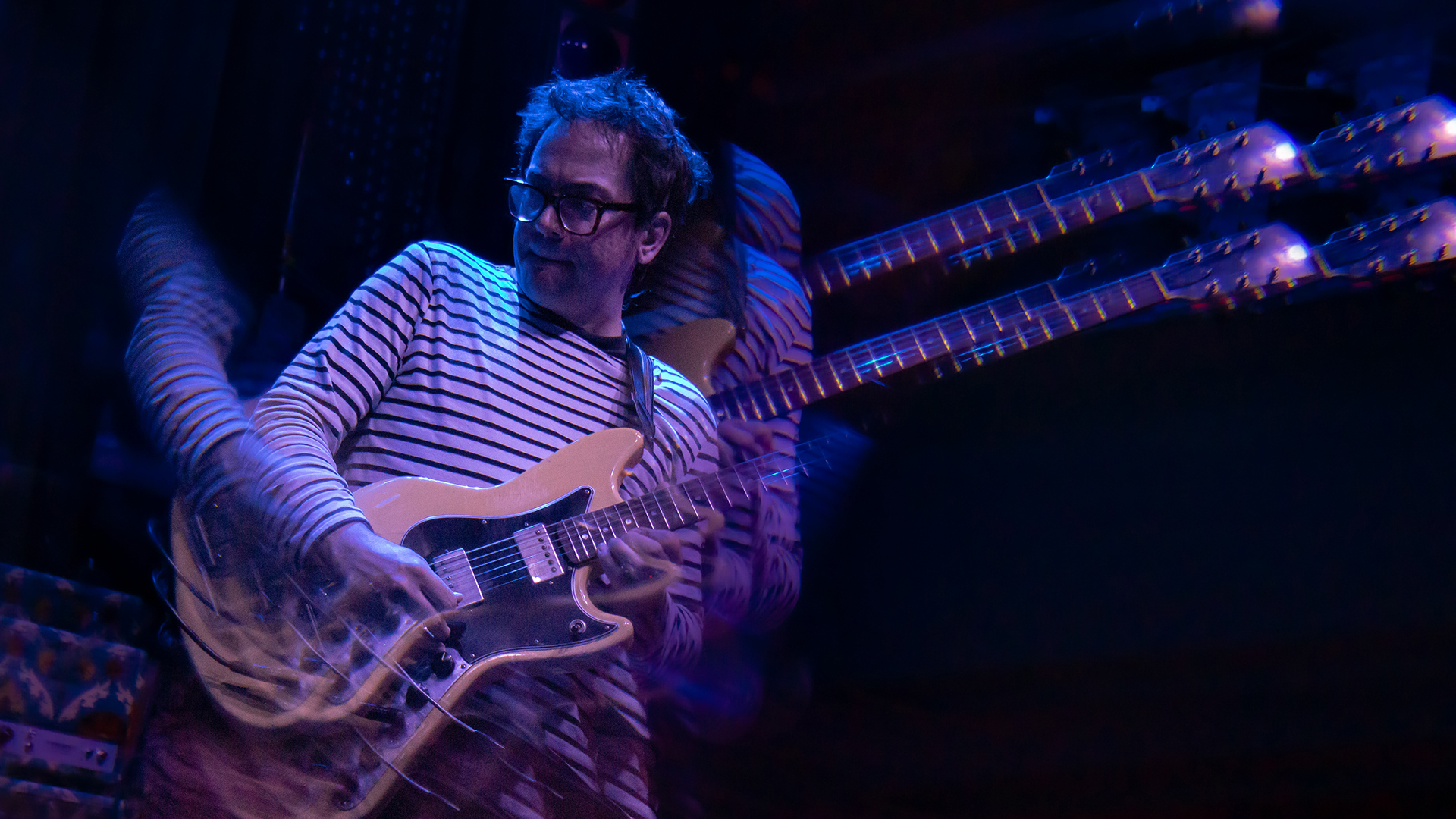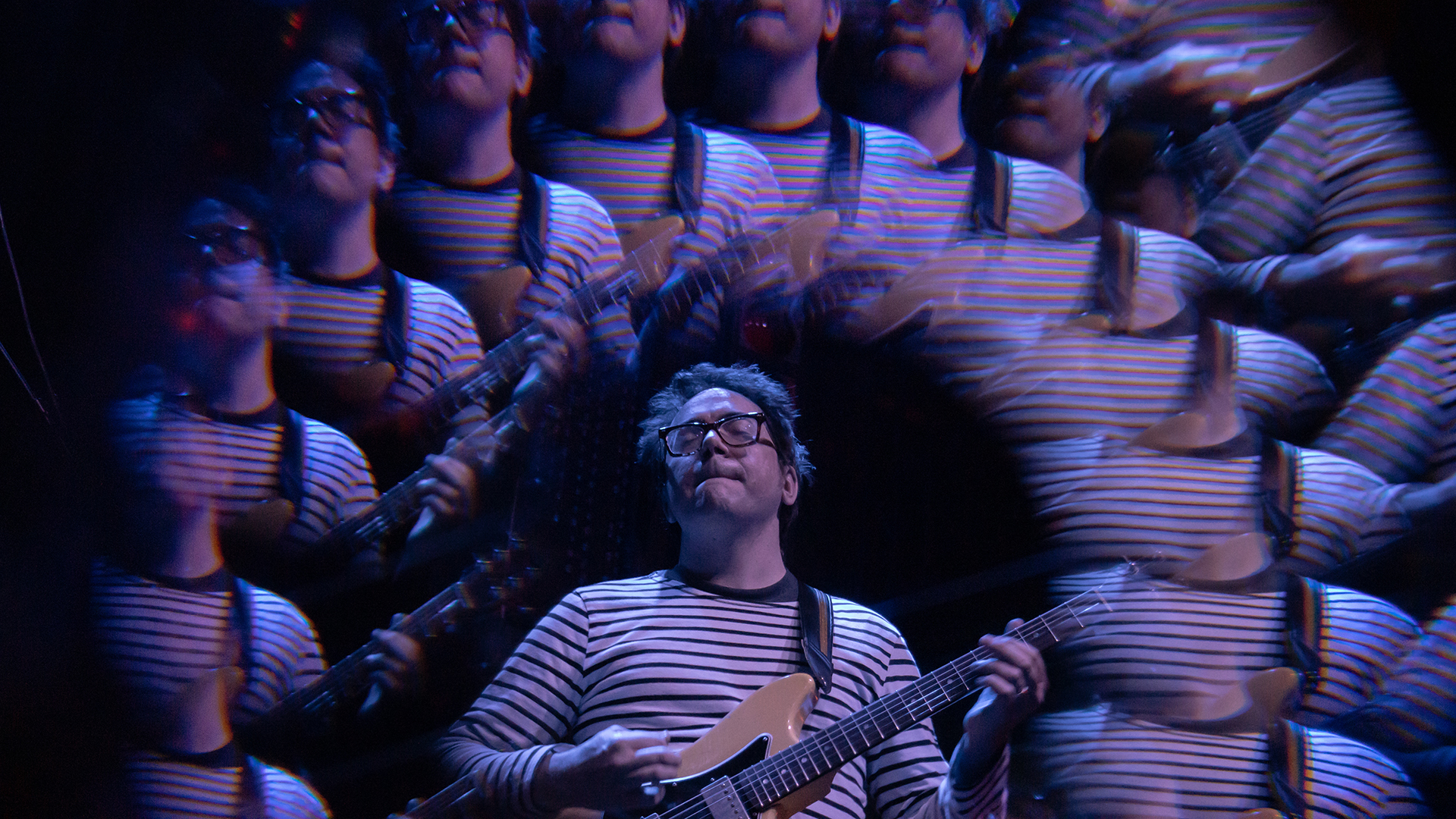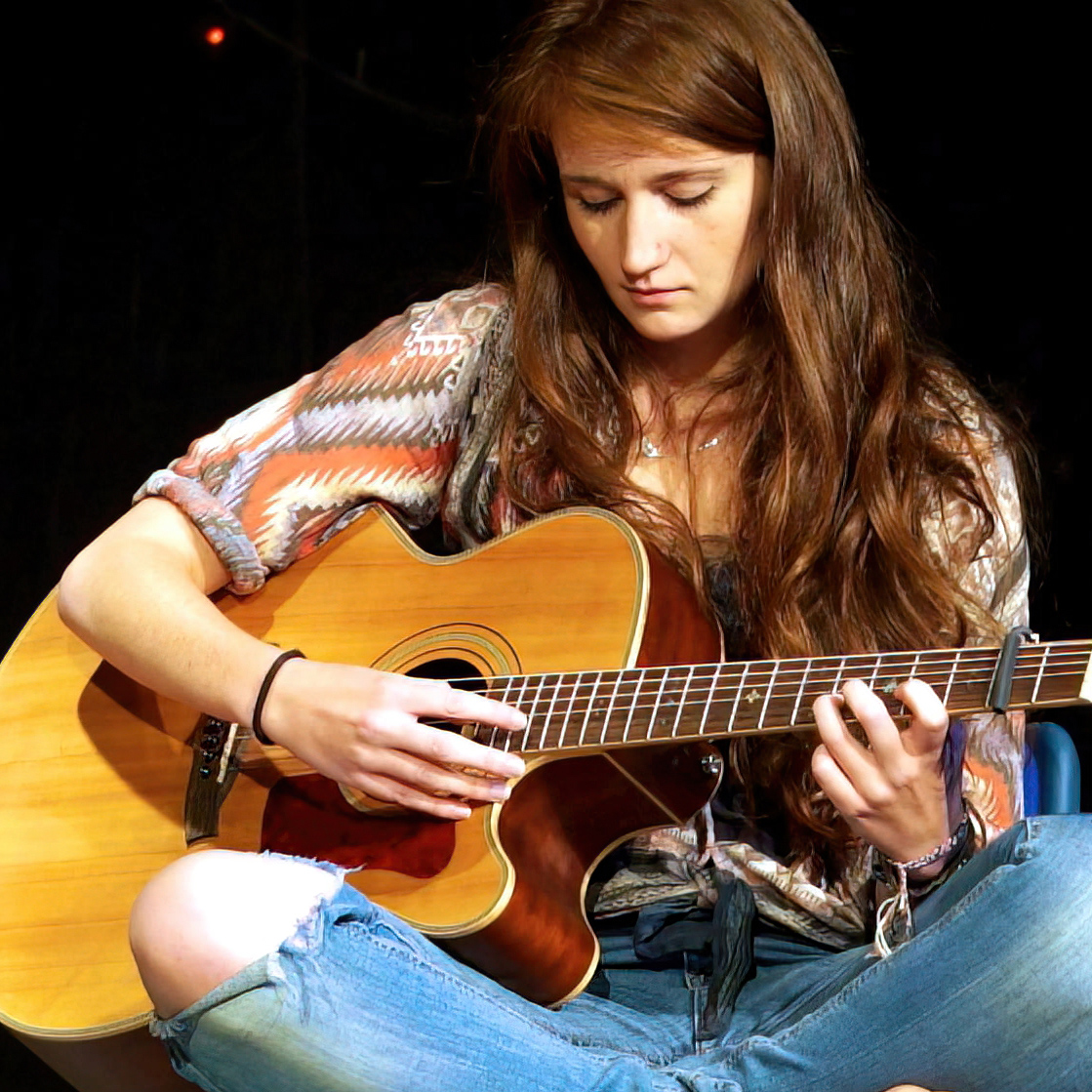“I view everything from the pick to the speaker as my instrument”: Meet John Frusciante favorite Anthony Pirog – the boundary breaking guitarist who’s jamming jazz, punk and fusion with Fugazi’s rhythm section
The D.C. virtuoso has joined forces with his heroes as The Messthetics

If you love skronky tones, think offsets are the coolest and have been waiting for someone to come along and comprehensively blow your concept of genre to bits, then Anthony Pirog is a guitarist you’ll want to get on your radar.
Stylistically, the Washington D.C. based virtuoso is something of an omnivore – equally hungry for incorporating elements of jazz, post-rock, experimental noise and free improvisation into his music.
In recent years he’s birthed two sonically opposing solo records – a violent noise-fest by the name of TM and a much more soothing ambient collection called The Nepenthe Series Vol. 1, which features contributions from visionaries like Nels Cline, Andy Summers and John Frusciante.
Indeed, the Red Hot Chili Peppers man previously raved to Guitar World about Pirog’s capabilities, particularly in regards to his playing with jazz-punk power trio The Messthetics – formed back in 2016 with ex-Fugazi rhythm section Joe Lally and Brendan Canty.
“I’ve seen Anthony live a couple of times,” the RHCP guitarist told GW in 2022. “And he’s really great, a real well-rounded guitar player. He has the post-punk and the punk influences – that aesthetic is there in his playing. But he’s also really versatile and more like what you might call fusion guitar playing - he loves Allan Holdsworth and John McLaughlin, and stuff like that.
“He doesn’t sound out of place playing with [Fugazi rhythm section] Brendan [Canty] and Joe [Lally], who come from a more punk background, but he has enough punk spirit in his playing for that.
“And he doesn’t have any of the pitfalls that come with fusion guitar playing – everything’s real emotional, but he’s extremely impressive from a technical angle, as well.
All the latest guitar news, interviews, lessons, reviews, deals and more, direct to your inbox!
“It just seems like he can do anything. He’s great at ambient guitar playing, too. He’s really good with effects, and can make his guitar sound any number of ways.”
That’s high praise, indeed – and it’s well warranted. With The Messthetics, Pirog has thrashed out two high energy instrumental LPs and racked up hundreds of gigs. Recently they introduced saxophonist James Brandon Lewis to the mix to turbocharge their latest studio effort, The Messthetics and James Brandon Lewis.
Cut in just two days, it’s stuffed with dueling lead instruments, exhilarating dynamic shifts, gnarly fuzz throwdowns and grooves tighter than a tourniquet...
Zooming in from his home in D.C, we meet the man with the pyrotechnic chops and the monster pedalboard at the heart of it all.
Who are your biggest guitar influences?
“It has to be genre by genre – but if I’m going to narrow it down, it’d probably be Sonny Sharrock, Nels Cline, Danny Gatton, Derek Bailey and Bill Frisell.”
Did you grow up listening to your Fugazi bandmates?
“Oh yeah! I love being from Washington, D.C. and I love the musical tradition here with Dischord Records, Danny Gatton and Roy Buchanan. Being able to take part in and honor the regional tradition has always been very important to me.”
Your approach within The Messthetics really seems to blend the raw spirit of punk with the technical complexity of jazz. How do you go about making different styles work together and what commonalities have you noticed between them in doing so?
I told John Frusciante what his I Could Have Lied solo meant to me, because it has everything: attitude, tone, pentatonic stuff and modal-based improvisation
“In my early 20s I was studying old time and bluegrass music, and I was learning all of these melodies. At the same time, I was learning bebop melodies and I remember a point where I realized they were all kind of cadencing the same way. There isn’t a big difference between the lines – especially the way they resolve – and that had a big impact on me.
“Early on, I loved listening to all kinds of music. So I thought if I just worked on everything, everything would meet up at some point in the future. That was my whole plan!
“As far as the punk influence goes, that was more of an energy thing. Early Mahavishnu Orchestra had a lot of high energy, high intensity stuff; and when I heard Lightning Bolt as a 21-year-old, that was also very exciting because it was instrumental music that really lifted the way you feel.

“Also, when I first started listening to music, there was a sweet spot where Sonic Youth were played on the pop radio stations. So, noise guitar was not a crazy idea to me as a young child!”
When we last spoke with John Frusciante, he had some glowing praise for your playing: “Anthony doesn’t have any of the pitfalls that come with fusion guitar playing – everything’s real emotional, but he’s extremely impressive from a technical angle, as well. It just seems like he can do anything.” What are your thoughts on that?
“First of all, that’s insane for me to hear! When I was a little kid I heard the solo on I Could Have Lied from Blood Sugar Sex Magik; and when I started being in touch with John, I remembered what that solo meant to me because it has everything: attitude, tone, pentatonic stuff and modal-based improvisation.
“It’s almost overwhelming for me to hear something like that because I got to tell him that. I don’t usually tell people I look up to things like that, but it meant a lot to me to be able to say that to him.”
What was it like working with him on Aurora from The Nepenthe Series Vol. 1?
“It was at the end of lockdown. I was in San Francisco and I made the solo track Bernal Heights on the kitchen counter of where we were staying.
“Right before that, I’d released a solo record called TM, which was a wall-of-noise guitar recording. That was the first record where I immersed myself in a single approach. I really committed to this idea of harsh noise, such that it became like a meditation on a certain feeling.
“I thought it would be interesting to go to the other end of the spectrum and do something very calm. Instead of doing a solo ambient record, I wanted to do a duos record in the way that Jim Hall or Steve Lacy had done in the jazz world.
“It was fun. It was all remote. I just invited my peers and people that I’d been listening to my whole life to collaborate, and I’m really proud of that work.”
On the subject of collaboration, the big difference between the latest Messthetics record and the previous two is the inclusion of saxophonist James Brandon Lewis. Is it fun for you to now have somebody to share the melodic responsibility?
There was a sweet spot [in the ’90s] where Sonic Youth were played on the pop radio stations. So, noise guitar was not a crazy idea to me as a young child!
“Absolutely! It’s a nice balance of personalities and everyone can trade functions. It makes it easier for me to be able to step back, instead of trying to figure out how to fill up space all of the time in the trio setting. I love doing that, but it takes a lot, and it’s nice to have somebody else take the lead for a bit.”
The album is made up of nine quite tightly structured songs, but did they grow out of improvisation?
“Not really – once I asked James to take part in the recording, based on the few times he’d sat in with us, we got to work and started writing and arranging ideas, leaving a lot of space for him.
“Emergence was a riff that I came up with and I didn’t want to add anything, because I knew James was going to come up with something really cool. So we just learned that as the rhythm section. It took maybe two minutes for him to create this melody that felt like it had always existed!
“L’Orso is an idea I had and Joe came up with the dyad bass part. The strength with the trio is that Joe and Brendan have amazing ideas in terms of arrangement and transitions – things that I would never think of.
“That Thang is an example of something James wrote. He sent us that melody on a voice memo a few days before rehearsal, and Joe and Brendan immediately laid down the groove.”
What’s the effect you kick on towards the end of the solo in That Thang?
“I was using an Octavia reissue stacked with a Greer Lightspeed Organic Overdrive; and then the glitchy stuff you hear is a Red Panda Tensor, which I learned about from Henry Kaiser when we recorded in Nashville.”

What’s your favorite guitar moment on the album?
“I really like my solo on Fourth Wall. I’m proud of that piece because it has a really slow build, and when we get to my solo, it really feels like we’re hitting the top point of the dynamic like we were aiming to.
“That piece uses the Collector Effectors Zonk Machine. It’s got this third knob that hits a point around 8:30 where the bass comes out and it sustains more, but you still get the gated decay. I really like how the tone on that solo produces the momentum that gets us to the doubled melody at the end.”
I like to practice with the sounds I use live. If you can generate the excitement you get from playing live while you’re practicing, you’re getting prepared in a different way
Do you consider yourself an experimentalist when it comes to tone?
“Yes! Going back to my college years in New York, there was a club called Tonic in the Lower East Side that I went to a lot. Basically anybody in the John Zorn scene could have been playing there – Fred Frith, Marc Ribot, Elliott Sharp.
“All of these people used effects and tones in very interesting ways and it was all highly personalized. After being in a room with these people, I decided that this was what I wanted to pursue.”
Learning to create, manipulate and be distinctive with tone is like a whole extra syllabus in the school of guitar that goes beyond the fundamental art of knowing where to put your fingers. How long did it take you to master that side of things?
“I’m still working on it all! Ever since I started, I’ve been setting up pedals to practice to records. It’s always been a part of what I do, and when I started making my own records, my attention to tone got a lot more serious.
“I know some people like to practice clean to work on their attack, but I like to practice with the sounds I use live. If you can generate the excitement you get from playing live while you’re practicing, you’re getting prepared in a different way.”
What does your full rig look like right now?
“I view everything from my pick to the speaker as my instrument. It starts with a BlueChip TP 50 pick. A lot of bluegrass guys use them – they have a really clean attack.
“The pedal chain is the Zonk Machine, and it’s my favorite fuzz for any situation. Then I go into a DigiTech Whammy V and a Classic Amplification CV-2 for the vibrato setting, and then a Klon Centaur. Next is a Lehle Volume Pedal and then the Greer Lightspeed for overdrive.
“I’ve gone through a lot of RAT pedals, but I’m really happy with the JAM Rattler Ltd. I have it in the custom Tetris enclosure, and I love that because it has a low gain switch that’s very nice.
“Then I go into the Tensor, the JAM Delay Llama and then there’s the Strymon Flint. I have the ‘favorite’ switch for big ambient reverb and I like the harmonic tremolo. After that, I’ll use the Neunaber Immerse Mk II for a thinner ambient reverb.
“That’s what I’m touring with right now, and I’m using a Benson Vincent amplifier.”
And your main guitar?
“An Abernethy Sonic Empress. Like lots of my guitars, this thing has the offset look because when I started out, grunge was on MTV and my dad was in a surf band, so I was doomed! It’s really light and it’s got a full-range sound, kind of like an SG. I’ve used this guitar on every record since I got it.”
- The Messthetics and James Brandon Lewis is out now.
Since graduating university with a degree in English, Ellie has spent the last decade working in a variety of media, marketing and live events roles. As well as being a regular contributor to GuitarWorld.com, she currently heads up the marketing team of a mid-scale venue in the south-west of England. She started dabbling with guitars around the age of seven and has been borderline obsessed ever since. She has a particular fascination with alternate tunings, is forever hunting for the perfect slide for the smaller-handed guitarist, and derives a sadistic pleasure from bothering her drummer mates with a preference for wonky time signatures.







